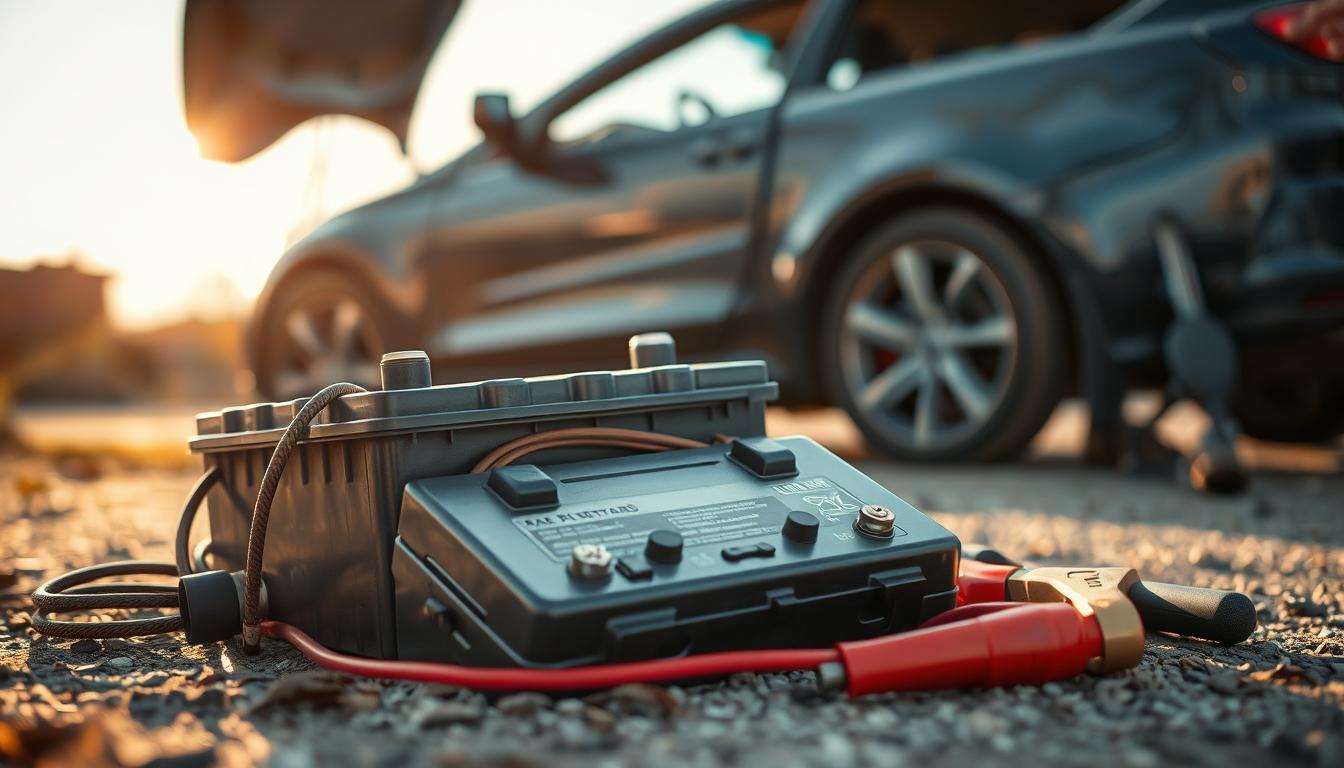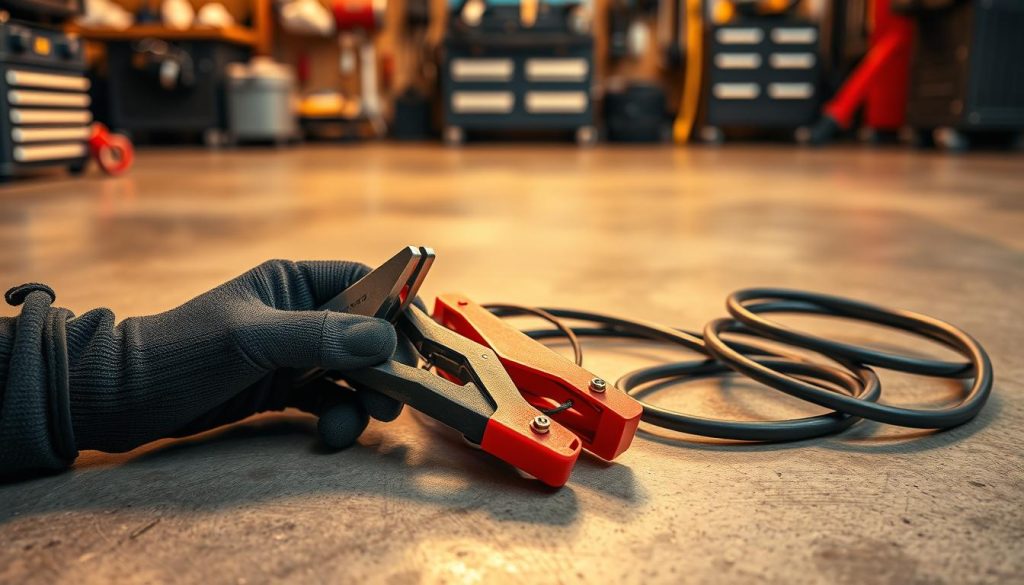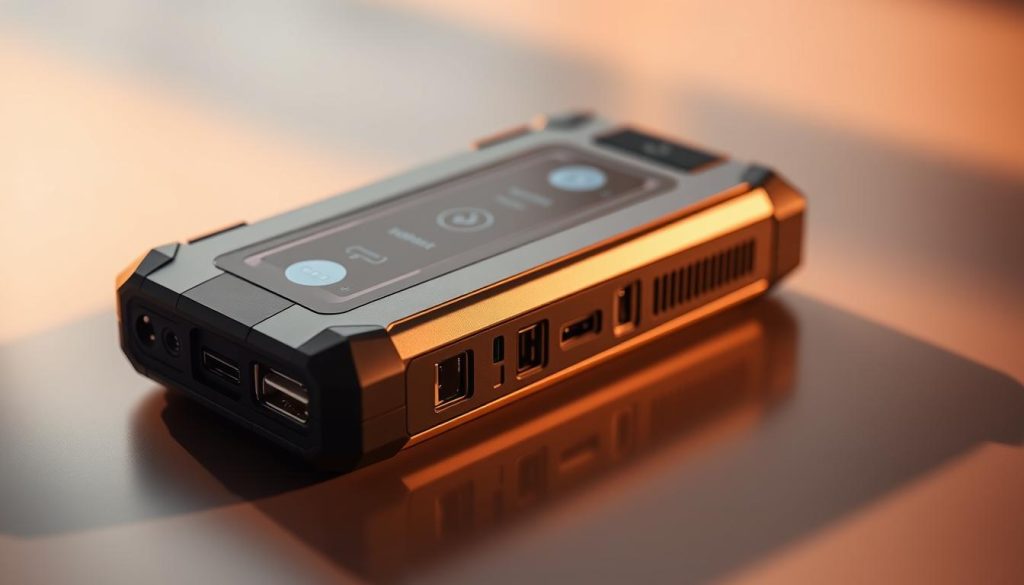
Ever had your car refuse to start on a chilly morning? You’re not alone. Most drivers face this frustrating situation at least once. Automotive experts say power sources in vehicles last 3-5 years. But even newer ones can fail without warning.
Why does this happen? Age is a big factor. Cold weather thickens engine oil, making the system work harder. Leaving lights on overnight drains energy fast. Even short trips without full recharging can weaken your vehicle’s heart over time. If your car is dead, knowing how to jump-start a car can be invaluable. You can connect jumper cables to the battery terminals and let run minutes to give your battery a boost.
That’s where professional assistance shines. Imagine being stuck in a parking lot after work. A quick call brings experts who revive your engine in minutes. They know how to connect jumper cables safely and ensure that the cables reach another car without damaging your car’s electronics. After connecting the jumper, they let run for a few minutes to make sure your battery starts working again.
Knowing these facts helps you stay prepared. In the next sections, we’ll break down warning signs to watch for and smart prevention strategies. You’ll learn exactly what to do (and avoid) when facing this common roadside challenge.
What causes that dreaded click when you try to start your car? Three main villains often team up to leave you stranded: aging components, electrical gremlins, and charging system failures. Let’s break down these silent saboteurs before they strike.
Most drivers don’t realize their vehicle’s energy hub has an expiration date. Like milk in your fridge, it goes bad gradually. After 3-5 years, internal parts corrode and lose capacity. Regular checkups can spot these issues early – corroded terminals appear as white or blue crust around connection points. If you find yourself with a car dead battery, knowing how to jump-start car can save you time and hassle.
Your car’s electrical system sometimes works against itself. A faulty alternator won’t replenish power during drives, while hidden drains like stuck glovebox lights siphon energy overnight. These issues often surface together – 43% of roadside calls involve multiple failure causes. To start car effectively, it’s crucial to understand these silent energy thieves.
Culprit | Warning Signs | Prevention Tip |
Aging Components | Slow engine crank | Annual load tests |
Corroded Terminals | Visible crust buildup | Baking soda cleaning |
Alternator Failure | Dimming headlights | Voltage checks |
Parasitic Drain | Dead battery overnight | Fuse box inspection |
Caught in a parking lot with a dead battery? Our emergency jump-start guide walks you through safe revival steps. Remember – prevention beats cure. Schedule voltage tests every oil change and watch for dimming lights or unusual clicks during startup. If you need to jump start, make sure you have the right tools ready to get started.
What’s in your emergency kit when your car won’t start? Being prepared starts with knowing your vehicle’s needs and having the right gear. Before reaching for those jumper cables, take a moment to review these vital preparation steps—they could mean the difference between a quick fix and a prolonged roadside ordeal. It’s essential to have a plan in case your batteries fail to run minutes when you need them most.

Your glove compartment should hold more than napkins and sunglasses. Here’s what you’ll need to jump-start your car:
Ever wonder why thicker cables matter? Lower gauge numbers mean less power loss during the transfer of energy to start working your car’s batteries. This table shows common options:
Cable Gauge | Best For | Max Length |
6 | Most passenger vehicles | 20 feet |
4 | Trucks/SUVs | 15 feet |
2 | Commercial vehicles | 10 feet |
Did you know some vehicles have special jump-start requirements? Your manual might specify:
Always make sure to remove metal jewelry before starting—even a wedding ring can cause sparks. Keep your manual handy, and practice the process in daylight before you need it at night. Preparation turns panic into confidence when trouble strikes.
Have you ever faced that heart-sinking moment when turning the key yields nothing? Let’s transform panic into action with a clear roadmap. Follow these steps carefully to revive your vehicle while keeping everyone safe.
Position the working car close enough for jumper cables to reach without tension. Engines off, parking brakes engaged. Open both hoods and locate the positive terminals – usually marked with a red cover or “+” symbol.
Step | Action | Safety Check |
1 | Connect red clamp to dead vehicle’s positive terminal | No loose clothing near moving parts |
2 | Attach other red clamp to helper car’s positive terminal | Ensure metal clamps don’t touch |
3 | Connect black clamp to helper car’s negative terminal | Remove jewelry first |
4 | Ground final clamp on dead car’s engine block | Choose unpainted metal surface |
Start the working vehicle and let it idle for 3-5 minutes. This allows energy to flow through the cables gradually. Now try starting your car. If it hesitates:
Once your engine roars to life, remove clamps in reverse order. Drive immediately for 20+ minutes to recharge properly. Keep those cables coiled neatly in your trunk – you might need them again someday!
Stranded without another vehicle in sight? Modern solutions exist beyond traditional methods. Let’s explore two reliable options that keep you moving when standard approaches fall short.

Portable jump starters are game-changers for solo drivers. These compact devices store enough energy to start car engines instantly. No cables? No problem. Many models include:
Keep one charged in your glovebox. They work best when maintained monthly – check the charge indicator every oil change.
When DIY methods fail, roadside assistance steps in. Services like AAA dispatch technicians who can:
Some mechanics offer valet service – they’ll pick up your car, fix it, and return it fully charged. This option works best if your vehicle can still move slowly to a safe pickup spot.
Imagine this: You’ve successfully revived your vehicle, but it dies again the next morning. Why does this keep happening? Let’s explore solutions when quick fixes don’t stick.
Issue | Warning Signs | Next Steps |
Alternator Failure | Dashboard lights flicker while driving | Test voltage output |
Parasitic Drain | Power loss after 24 hours parked | Check interior lights |
Aging Power Unit | Over 3 years old | Load test at repair shop |
Drive your car running for 30 minutes post-jump to let the alternator fully recharge battery systems. Still no luck? Time to dig deeper.
Modern vehicles need expert eyes when issues persist. Mechanics use specialized tools to:
Remember – recurring dead battery situations often signal bigger problems. Don’t ignore three-strike scenarios. A quick professional inspection could save you from repeated roadside headaches.
Ever notice white powder building up on your vehicle’s metal connections? That sneaky corrosion quietly steals power daily. A few simple habits can keep your rides smooth and predictable.
Grab baking soda and an old toothbrush next time you pop the hood. Mix 1 tablespoon with water to make a cleaning paste. Scrub gently on those crusty terminals – you’ll see the greenish gunk disappear fast. Dry with a clean rag, then apply petroleum jelly to prevent future buildup.
Why does this matter? Clean surfaces let power flow freely. Dirty connections force your vehicle to work harder, like breathing through a stuffy nose. Check terminals every oil change – it takes three minutes but adds months to your system’s life.
Most power units clock out after 3-5 years. Watch for these retirement signals:
Pro tip: Write your installation date on the case with permanent marker. When that fourth birthday arrives, schedule battery replacement before winter arrives. Your future self will thank you during that first frosty morning commute.
Ever wondered why your car still struggles after a jump? You’ve now got the tools to handle these situations like a pro. Remember – safety always comes first. If connecting cables feels overwhelming, call a roadside expert. They’ll handle the heavy lifting while you stay safe.
The magic happens when you position vehicles correctly and attach clamps in the right order. Always ground that final cable on an unpainted metal surface – your engine block works perfectly. After reviving your car, drive for at least 20 minutes. This lets your alternator fully recharge the system.
Here’s a full-circle moment: That successful jump start often means replacement time nears. Most power units last 3-5 years. If yours keeps dying, consider upgrading before winter arrives. Keep these tips in your glove compartment – they might just save your next road trip.
If your vehicle still won’t crank, the issue might be a faulty alternator, corroded terminals, or a completely drained battery that can’t hold a charge. Check connections for corrosion first. If problems persist, call a mechanic valet service for diagnostics.
Not all cables work equally. Thin or damaged wires might fail to transfer enough power. Look for thick, copper-clad cables (10-12 gauge) with sturdy clamps. Ever tried starting a truck with flimsy cables? It’s like using spaghetti to tow a trailer!
Keep the car running for at least 15-20 minutes. This gives the alternator time to recharge the battery. Drive around if possible—it helps the system distribute power more effectively than idling.
Portable units like NOCO Boost are great for emergencies, but they require proper storage and charging. Roadside help (like AAA) offers expertise if you’re unsure about the process. Ever been stuck in a parking lot at midnight? Having both options saves stress.
Moisture and chemical reactions cause that white, powdery buildup. Clean terminals yearly with baking soda and water. Pro tip: Apply dielectric grease afterward to slow future corrosion. Neglect this, and you’ll be scrubbing like it’s a science fair project!
Most last 3-5 years. Extreme heat or frequent short trips shorten lifespan. Notice dimming lights or slow starts? Test it at an AutoZone—they’ll check it for free. Waiting too long might leave you humming “I Will Survive” in a dark garage.
Absolutely! Modern cars often have alerts, but older models don’t. If this happens, a jump-start should work if done quickly. Let it drain completely multiple times, though, and you’ll need a replacement. Ever felt that “oh no” moment when you spot the dome light still on?
Connecting clamps to the wrong terminals! Always attach red to positive (+) first, then black to an unpainted metal surface—NOT the dead battery’s negative (-). Reverse this, and you might fry the electrical system. Seen sparks fly? That’s your cue to stop and reassess.
Call us for immediate roadside assistance or fill out the form below to request service. Whether you're locked out, out of gas, or have a flat tire—EZ3 is ready to respond 24/7.